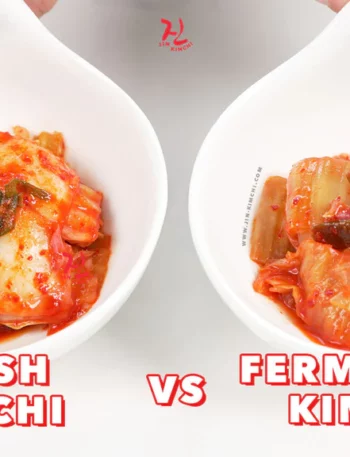
If you’re like most of us, you probably think you’ve nailed the art of cooking pasta: water, salt, noodles, boil, done. Simple, right?
But what if I told you that many of us — myself included — have been fumbling with our fettuccine, botching our bucatini, and mangling our macaroni this whole time?
You’re not alone if you’ve never questioned this routine; it’s what we all learned. It’s the classic recipe handed down from one hungry generation to the next, each faithfully believing they’ve mastered the ultimate bowl of al dente noodles.
But as it turns out, there are some surprising tweaks to our time-honored pasta ritual that can completely change the game, bringing you closer to Italian-style perfection and saving you some headaches (and overcooked spaghetti) along the way.
The Myth of the Big Pot and Boiling Water
First off, there’s a popular myth out there that cooking pasta requires a massive, pot-clogging mountain of water. This one has probably cluttered more than a few of our cabinets and, truthfully, it’s outdated.
You might be picturing an Italian nonna, wooden spoon in hand, shaking her head at this notion. But even she might be a little shocked to hear that modern cooking science has, in fact, debunked the need for gallons of water.
Chef Harold McGee, culinary scientist extraordinaire, flipped this on its head, revealing that you can cook pasta in much less water without sacrificing texture or flavor.
You don’t need to fill that whole big pot — half, or even less, is more than enough for most pasta dishes. And that alone has saved me a ton of time and sanity.
Imagine a friend telling you they bought a three-foot pool for their goldfish, “just in case it gets feisty.” That’s what cooking pasta in a massive pot is like.
Sure, there’s nothing wrong with it, but it’s more trouble than it’s worth. A smaller pot not only heats up faster (hellooo, less waiting!) but also keeps that starchy, silky pasta water even starchier, which is actually a secret weapon for those perfect, creamy sauces.
Forget the Olive Oil
Let’s address another big one: adding oil to the pasta water. We’ve all seen it, or maybe even done it, giving the pot a good glug of olive oil to “keep the pasta from sticking.” Spoiler: not only is it unnecessary, but it actually works against your sauce clinging to the noodles!
I used to do this, thinking I was so clever, only to end up with sauce sliding right off like water on a duck’s back. Turns out, the oil creates a slippery coating that makes it hard for the sauce to stick, defeating the very thing we’re trying to achieve: a deliciously saucy plate.
Instead, give your pasta a quick stir during the first minute or two of boiling. This helps prevent clumping without that oil slick sabotaging your sauce game. And it’s much easier than scrubbing down an oil-splattered stove afterward, right?
Starchy Pasta Water
Here’s a true “aha!” moment for me. I used to dump all my pasta water right down the drain without a second thought. Little did I know, I was sending liquid gold into the sewer. That starchy pasta water is practically magic when it comes to making sauces cling, thicken, and shine like restaurant-quality pasta.
Imagine pasta water as a sneaky sidekick, the Robin to your Batman. When you add it to a sauce, it acts as a bonding agent, creating a creamy, cohesive finish that transforms an average dish into something spectacular.
Next time, save about a cup of that liquid gold before draining — then add it gradually to your sauce, adjusting to your ideal consistency. It’s like a mini cooking hack that most of us never realized we needed.
Salt Like You Mean It
If there’s one cardinal sin in pasta cooking, it’s the under-salted pot. Italian chefs often say the water should be as salty as the sea. That’s not a challenge to empty your salt shaker into the pot, but it does mean adding more than a light sprinkle.
We’re talking about enhancing flavor, not creating a briny broth, so about a tablespoon for every four cups of water will give you just the right level of seasoning. I still remember the first time I tasted pasta cooked with properly salted water — I swear, it was like a pasta epiphany.
Don’t Overcook It
We’ve all heard of “al dente,” the pasta texture sweet spot. But let’s be real — sometimes that “firm to the bite” phrase just ends up being “undercooked” to the uninitiated.
When Italians say al dente, they’re talking about pasta with just enough resistance to give it a bit of chew, holding its shape and absorbing sauce beautifully. Overcooking, on the other hand, makes pasta gummy and robs it of its signature bounce.
Here’s a trick: start tasting your pasta about two minutes before the package recommends. If it’s still too tough, give it another 30 seconds, but trust your teeth over the timer. Once drained, remember that the pasta will continue to cook slightly, especially if you’re tossing it directly into your sauce.
Sauce It Up — In the Pan, Not on the Plate
So here’s the finale, the trick that made me a pasta evangelist among my friends: toss that pasta in the pan with the sauce before it hits the plate.
When you throw freshly cooked pasta straight into the sauce, magic happens. The noodles soak up the sauce, melding the flavors together in a way that pouring sauce over the top simply can’t achieve.
You know how that last slurp of ramen is so good because the noodles have had time to soak up all that broth? Same concept here. Pasta isn’t just a vehicle for the sauce; it’s a co-star.
A little heat, a little toss, and maybe even a touch more pasta water if things look a little dry, and voila — pasta paradise.
One Last Thing
Finally, no matter how skilled you get with your pasta-making techniques, the ingredients you choose play an equally big role.
Using quality pasta, good olive oil, fresh basil, and real Parmigiano-Reggiano can turn even a simple bowl of spaghetti into something memorable.
It’s like the difference between playing a song on a cheap radio versus a high-end stereo; the melody is there, but the depth, the richness — it’s a whole different experience.
So, there you have it: a modern pasta guide that might just transform your spaghetti night. From the pot to the plate, a few small changes can make a huge difference, bringing out richer flavors, better textures, and, let’s be honest, a bit more joy in the kitchen.
Next time you cook pasta, break the rules a bit, experiment, and try out these tweaks. You might just wonder how you ever ate it the old way!









